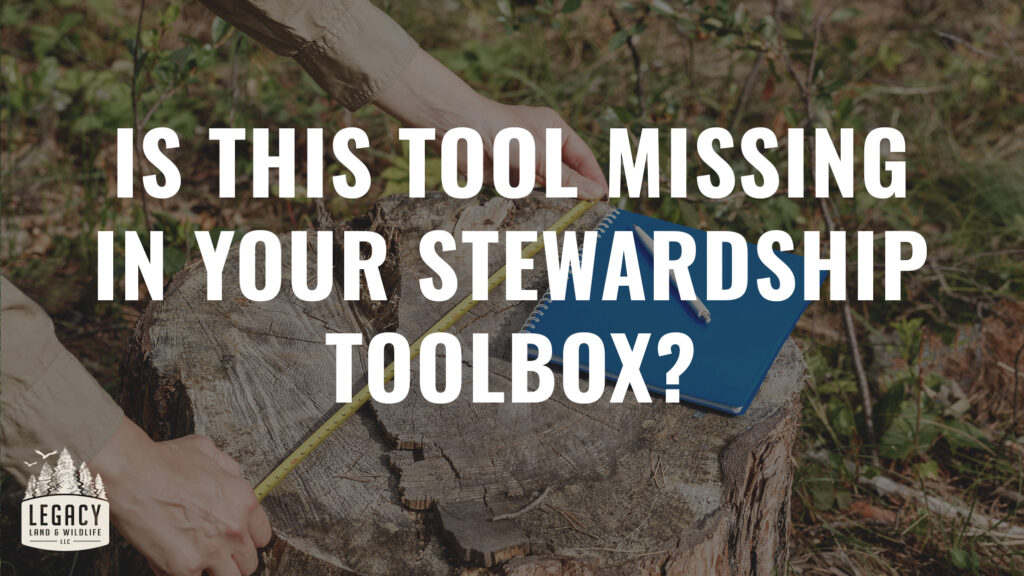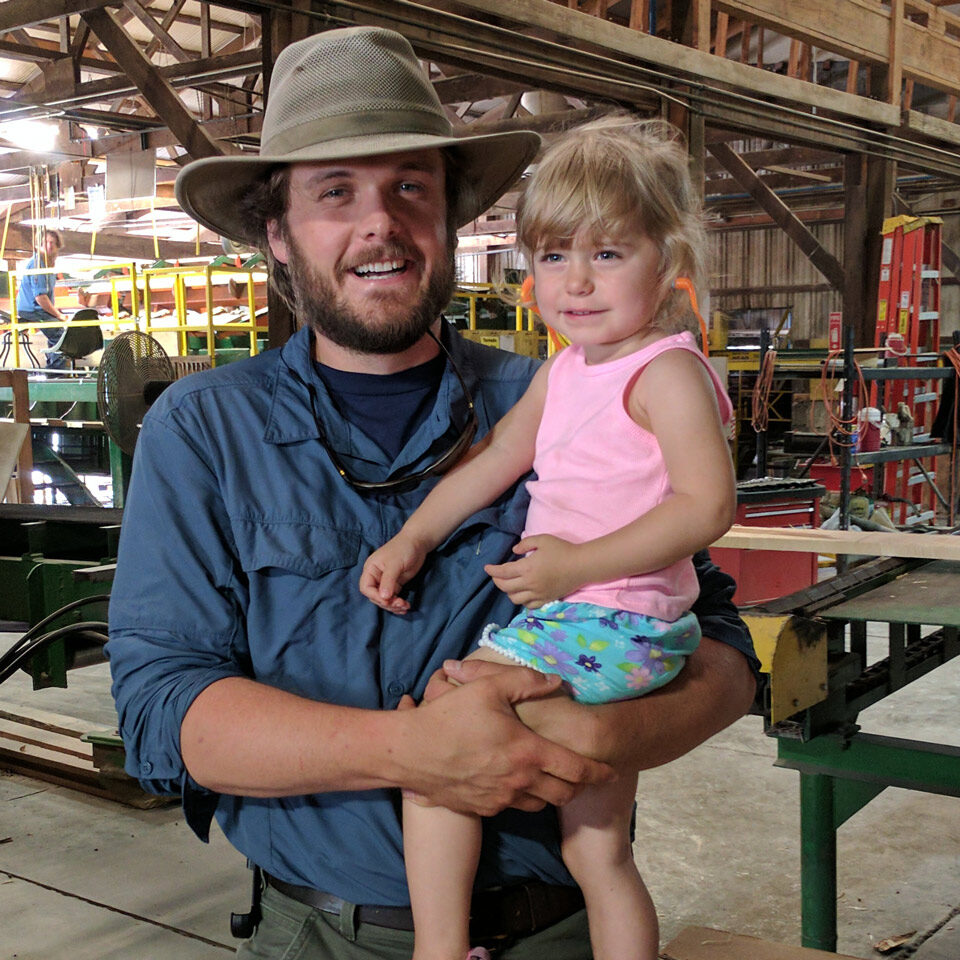
Is this Tool Missing in Your Stewardship Toolbox?
A plan is the most crucial missing tool for your stewardship on the landscape.
The problem with not having a plan is that you are planning to fail.
You are planning to fail by not understanding your need for a plan. This approach typically results in scatter brained management.
You are planning to fail by not delineating the current property conditions. High priority solutions can easily be delayed because you are missing a crucial site assessment.
You are planning to fail by not identifying what you ought to accomplish on your property. What you think should be accomplished could be a bad idea.
You are planning to fail by not defining when you should perform the recommendation on your property. A missing timeframe is the gateway to delayed stewardship.
Therefore, the pivot point of stewardship and conservation on the landscape is having a tactical tool. It will be a simple guide and useful reference for your stewardship on your property.
A careful consideration of the following four questions should sharpen a plan for stewardship on your property.
1. Why should you have a plan?
Your plan will provide invaluable benefits that based on foundational goals.
The practical benefits of your plan are as follows:
- Functional: identifies and clarifies the needs for your stewardship investment.
- Influential: inspires your intentional woodland and wildlife management.
- Rational: identifies solutions are based on sensible needs of your investment.
- Educational: describes the uses of woodland and wildlife management to you.
Further, the foundational goals of your plan could include the following:
- Must reverse the trend of disorganized landscape stewardship.
- Encourage the appropriate biological diversity, complexity, and vitality of the ecosystem
- Maximize productivity of the land and wildlife populations and habitat.
This plan will be your customized field guide for faithful stewardship on your property.
2. What are the current conditions of your property?
The power of skilled observation is invaluable when developing a plan for stewardship of your property.
The course of long-term stewardship of your property will be determined by how well you discern the proper stewardship needs.
The needs on your property must be derived from the current conditions.
Here is a list of observations you must make to formulate these needs:
- ID invasive species
Non-native invasive species are becoming an increasing problem on the landscape.
These should be your main priority to address if any are present.
- ID tree and shrub species (and other plant species as you are able)
It is crucial to understand the plant community diversity throughout your property.
- ID average size class and average basal area (BA)
- Pick the average size class from the following list:
- Seedling and sapling (0–5-inch DBH)
- Small poletimber (6–8-inch DBH)
- Large poletimber (9–11-inch DBH)
- Small sawtimber (12–15-inch DBH)
- Large sawtimber (16-inch+ DBH)
- Determine the average BA by using a prism. 10-factor or 20-factor prisms are often used in northeast Ohio. Ask your local service forester for specifics regarding your region.
- Example:
Average size class: Small sawtimber (12–15-inch DBH)
Average BA: 140 ft2/acre
- Delineate, categorize, and describe the forest structure complexity
Use an aerial map to separate your property into distinguishable stewardship units based on collective like parts (such as the average size class and average basal area as identified above).
For example, a seedling and sapling unit should be set apart from a small sawtimber unit because the overall management goals in these two units will be distinctly different.
- Note any discernible features of each unit
Pay attention to specific features (such as vernal pools, gas well sites, cemeteries, etc.) because these may influence how you manage a unit.
- Describe the forest and habitat complexity
Note the presence of identifiable sizes classes within a particular unit:- Seedling and sapling (0–5-inch DBH)
- Small poletimber (6–8-inch DBH)
- Large poletimber (9–11-inch DBH)
- Small sawtimber (12–15-inch DBH)
- Large sawtimber (16-inch+ DBH)
The forest complexity increases with the increased presence of the listed size classes.
- ID wetlands and threatened and endangered species
These are features may influence the trajectory of management depending on their presence.
- ID any erosion concerns
Erosion can create significant issues. It should be your priority to take note of any erosion problems.
An effective tool is only useful in the hands of a knowledgeable user.
A stewardship plan is only productive in hands of an informed user.
Knowing the current property conditions will sharpen your stewardship skill on the landscape.
3. What recommendations should you accomplish on your property?
It is foolish to blindly apply stewardship recommendations to your property without considering the unique conditions.
These recommendations must be specifically and strategically dependent on your current property conditions.
After considering your property site conditions consider this brief list of recommendations:
- Invasive species control
- Woody interference control (grapevine control for example)
- Habitat piles (also known as brush piles)
- Crop tree release
- Tree and shrub plantings
- Pollinator planting
- Edge feathering
After you have a fairly good grasp of the exclusive site conditions and recommendations, you must turn your mind to determining a favorable timeframe to accomplish the recommendations.
4. When should you do the recommendations on your property?
An absent prioritized timeframe to accomplish the recommendations will handicap purposeful stewardship. This is further disabled when you have a general idea what to do and the ambition to do them.
Consider the following thoughts when setting reasonable timeframes to accomplish stewardship practices:
- The timing to accomplish recommendations is proportional to your current property conditions and your available stewardship resources (time, energy, finances, and help from others).
- A woodland stewardship plan is typically written by a forester (service forester or consulting forester) for a 10-year period of time.
- Prioritize invasive species control (especially if you are planning to do a timber harvest in the near future).
- Applying for a federal grant (Environmental Quality Incentives Program for example) will typically delay your initial stewardship progress.
- Set appropriate deadlines to accomplish specific recommendations so that you have enough time to complete your objectives.
- Your plan can always be adjusted (depending on your progress) as time transpires.
Your prioritized timeframe will be affected by your available time, energy, finances, and help from others. It is crucial that you consider the balance of these so that you can successfully achieve your goals and objectives.
Considering and answering these questions will sharpen your stewardship tool so that you can have a simple guide and useful reference for your stewardship on your property.

About Dave Duell
Outdoorsman, conservationist, forester, father, husband, and Christian: Dave Duell owns and manages Legacy Land and Wildlife LLC and provides conservation and forestry services and guidance to Pennsylvania and Ohio. It's his passion to assist and educate land owners and other outdoors enthusiasts about the importance of being a good steward of their land and the wildlife therein. Learn more about Dave and Legacy Land & Wildlife by clicking here.

Legacy Land & Wildlife LLC is your resource for forestry, conservation, and land & wildlife stewardship. Based in Eastern Ohio, we provide services to Ohio, Pennsylvania, and beyond.
